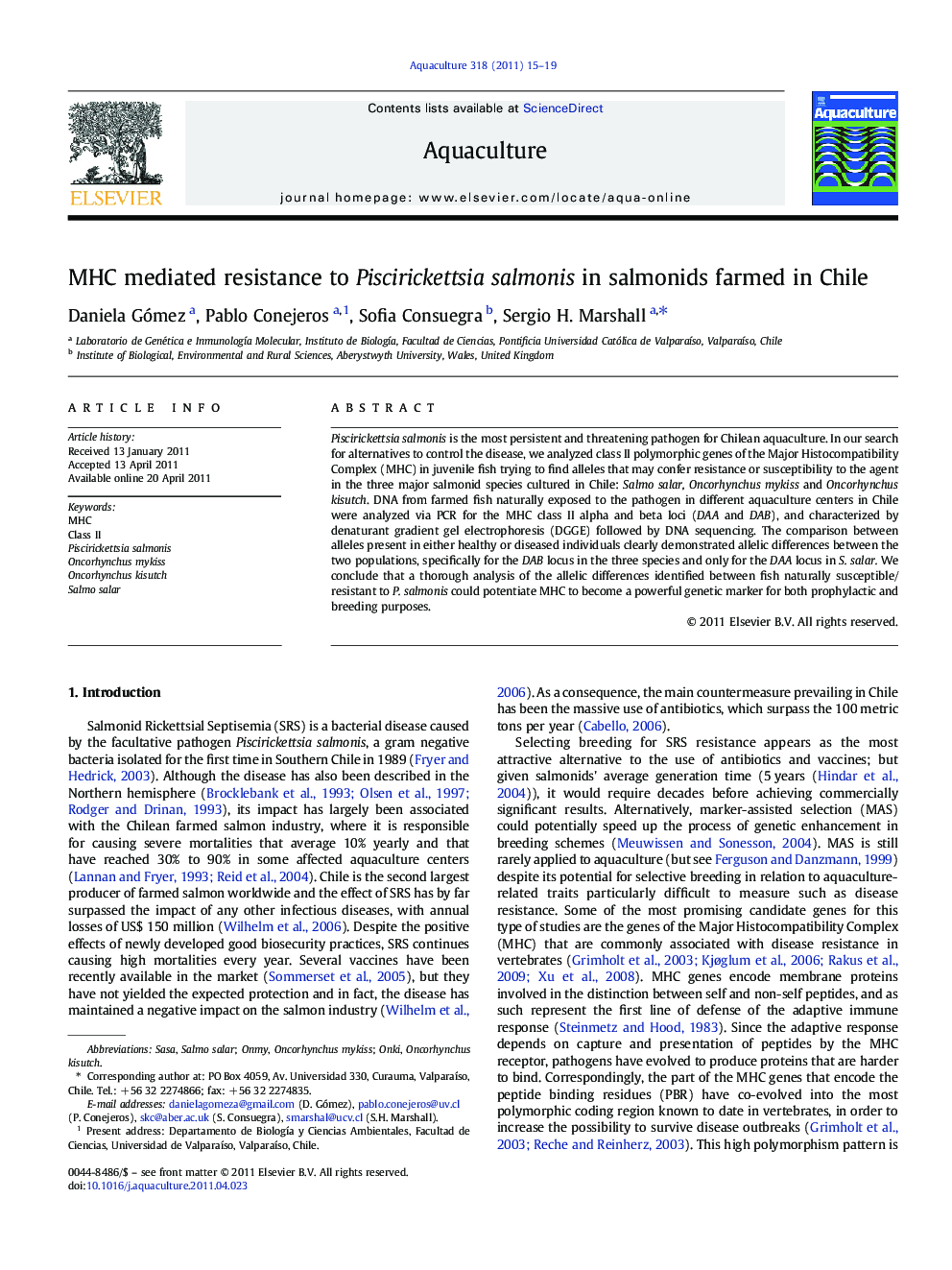| Article ID | Journal | Published Year | Pages | File Type |
|---|---|---|---|---|
| 2422893 | Aquaculture | 2011 | 5 Pages |
Piscirickettsia salmonis is the most persistent and threatening pathogen for Chilean aquaculture. In our search for alternatives to control the disease, we analyzed class II polymorphic genes of the Major Histocompatibility Complex (MHC) in juvenile fish trying to find alleles that may confer resistance or susceptibility to the agent in the three major salmonid species cultured in Chile: Salmo salar, Oncorhynchus mykiss and Oncorhynchus kisutch. DNA from farmed fish naturally exposed to the pathogen in different aquaculture centers in Chile were analyzed via PCR for the MHC class II alpha and beta loci (DAA and DAB), and characterized by denaturant gradient gel electrophoresis (DGGE) followed by DNA sequencing. The comparison between alleles present in either healthy or diseased individuals clearly demonstrated allelic differences between the two populations, specifically for the DAB locus in the three species and only for the DAA locus in S. salar. We conclude that a thorough analysis of the allelic differences identified between fish naturally susceptible/resistant to P. salmonis could potentiate MHC to become a powerful genetic marker for both prophylactic and breeding purposes.
